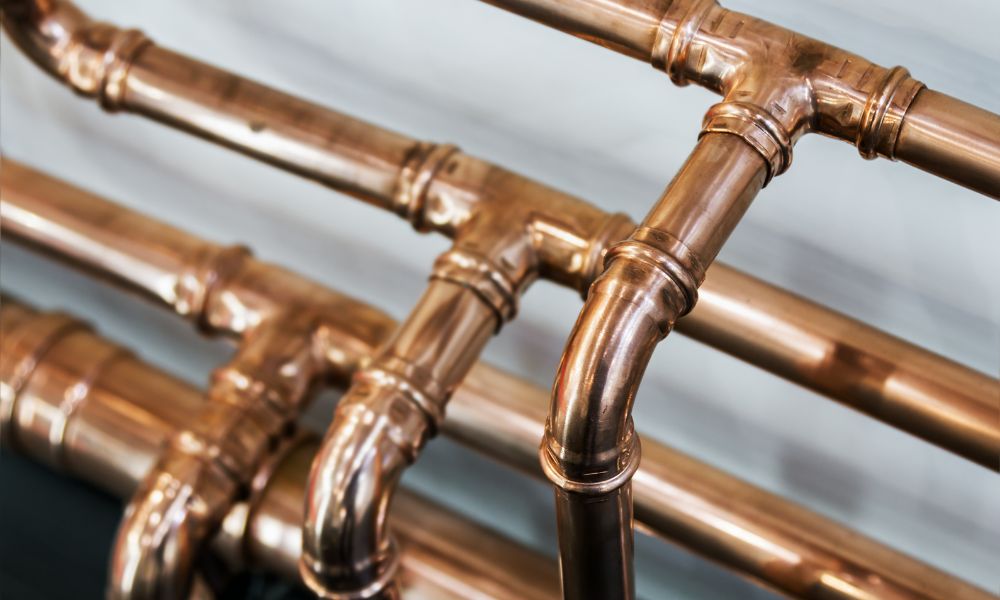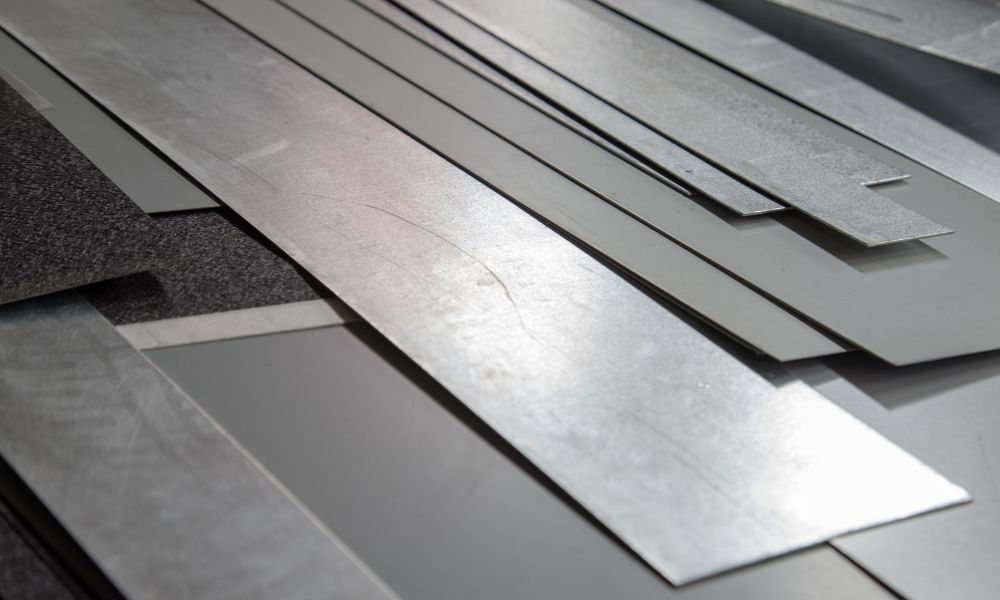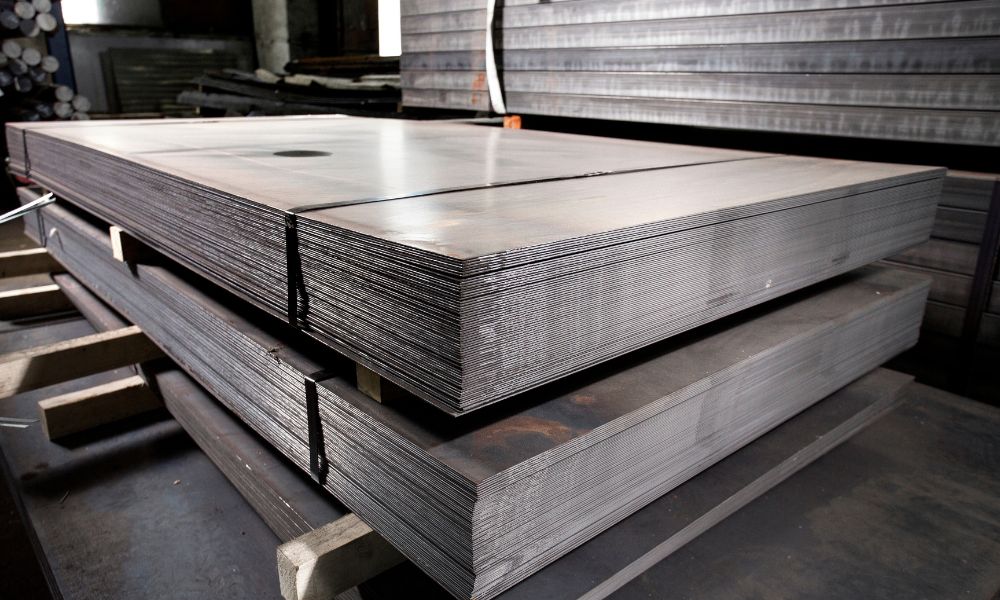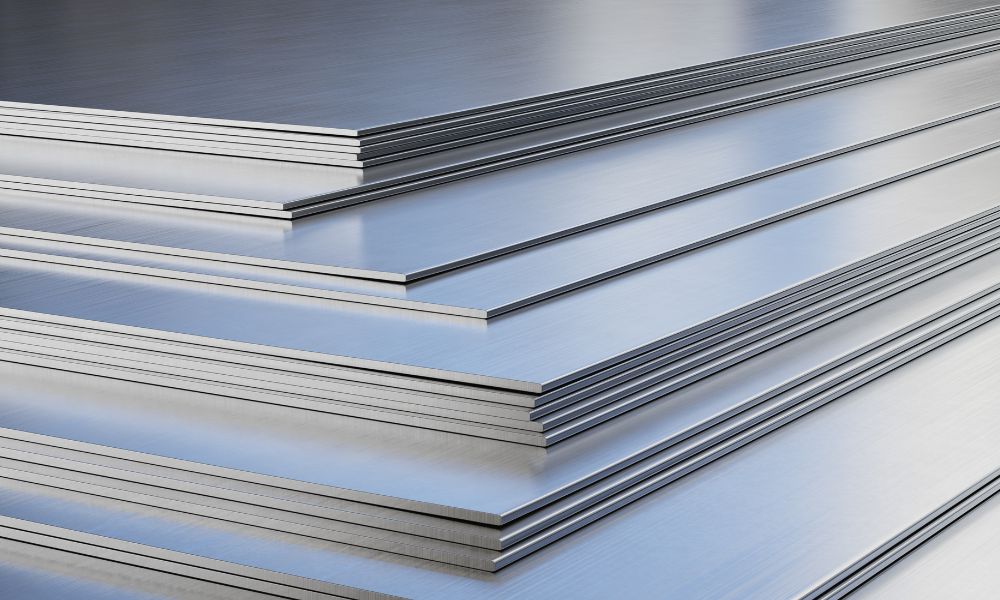Why Water Pipes Are Commonly Made From Copper
Leave a Comment
When you understand which materials to choose over others, you can easily build safe, secure water pipes. For instance, you may know that copper is common in water pipes, but do you know why? Check out the explanation below to see why water pipes are commonly made from copper. That way, you can start carefully designing pipe systems instead of doing any guesswork during the planning phase.
Corrosion Resistance
Moisture can promote the corrosion of certain metals, which can cause problems in various industries. It should go without saying that a corroded pipe isn’t exactly something you want in your water supply. Luckily, copper is naturally corrosion-resistant. The presence of iron in metals will trigger corrosion, but copper does not contain iron. Instead of corroding, copper forms a patina on the surface that helps it combat corrosion and remain intact.
Lead-Free Construction
When installing water pipes, think about the potentially toxic materials leaching into the water. For example, preventing lead from entering the water supply is critical to a safe drinking water system. One of the primary reasons why water pipes are commonly made from copper is that they contain no lead. Thanks to a lack of corrosion and lead, copper pipes are an ideal solution for carrying water, but these aren’t the only benefits.
Ductile Design
As a copper sheet supplier, Thin Metal Sales provides manufacturers with copper for many reasons, one of which is ductility. Thanks to them being so ductile, you have more flexibility when working with copper. You can easily build copper pipes into a system that efficiently carries water to its destination by having them undergo extreme deformation.
As you can see, copper is a versatile material that can make your project easier and safer than other materials available. The more you know about copper, the better you can use it to your advantage when the opportunity to manufacture metal piping arises.
A Quick Guide to Understanding Aluminum Temper Designations
Leave a Comment
Aluminum comes in more than one form thanks to various treatment processes. For instance, temper designations help manufacturers know more about each metal just by looking at a single letter. If you’re unaware of all the designations, then it can be a bit confusing to decipher. We’ve put together a quick guide to understanding aluminum temper designations so you can catch up right now.
F
The first temper designation is F, which stands for “fabricated.” However, this designation does not simply mean that the aluminum has undergone fabrication. Instead, this means the material is successfully tempered without special control implemented in the strain hardening or thermal treatment.
W
Unfortunately, the letters don’t always correspond to words the way “F” does to “fabricated.” For example, the W temper designation for aluminum stands for “solution heat treated.” This designation represents materials that spontaneously age after the heat treatment process.
T
T is a temper designation that signifies thermally treated aluminum. However, there are various treatments that can full under the T designation. For example, T1 signifies aluminum that is properly cooled down from an elevated temperature shaping process, then naturally aged to a substantially stable condition. On the other hand, T5 represents aluminum that is cooled from elevated temperature shaping processes and artificially aged.
H
H is a designation used to symbolize strain-hardened products. In some cases, H-temper-designated aluminum materials have not undergone heat treatment. The primary method used to strengthen aluminum in this process is strain hardening, but it will earn an H temper designation with or without thermal treatment afterward.
O
The final stop on our guide to understanding aluminum temper designation is O, which stands for “annealed.” This means that the aluminum has been annealed, or recrystallized, to achieve a low strength but high ductility design. As you can see, learning the aluminum temper designations is fairly straightforward if you look closely at the meanings.
At Thin Metal Sales, we provide thin aluminum sheets for aerospace, medical, and other industries. Always ask your aluminum provider about the temper designations if you want to ensure the metal will react precisely how you need it to. As you can see from the list above, seemingly small changes in the tempering process can have substantial effects on the metal.
Why Stainless Steel Is Corrosion Resistant
Leave a Comment
Manufacturing any machine or structure requires a careful selection of work materials. Whether you’re working with aluminum, steel, or beyond, you need to know how the metal will react in your application. For instance, stainless steel has a reputation for corrosion resistance, making it a helpful material in various projects.
Making the most out of stainless steel’s corrosion defenses requires an understanding of how it achieves those defenses. Discover why stainless steel is corrosion-resistant today so you can learn how to utilize it at work.
What Is Stainless Steel?
Explaining corrosion resistance requires looking at what stainless steel even is. Steel already has its useful applications, so why rely on stainless steel in some situations? One additional component to the design opens many doors for manufacturers. It all comes down to the alloys, primarily Chromium content. Stainless steel is a steel alloy that contains at least ten percent Chromium.
Corrosion Resistance
Thin Metal Sales is a stainless steel sheet supplier, so it’s important for us to understand what makes this material so adept at combating corrosion. Chromium is a special ingredient in stainless steel that improves corrosion resistance. As useful as it may be, steel on its own can rust quite easily.
Chromium reacts with the air around the stainless steel to create a thin protective layer on the surface. Thanks to that protective layer, stainless steel can combat corrosion. Now, it’s time to take a closer look at the importance of the reactive surface.
Useful Applications
Understanding why stainless steel is corrosion-resistant also requires looking at the common applications. For instance, the aerospace industry continues to use stainless steel for its applications. Vehicles, such as aircrafts, must have ample protection from the elements in flight, and stainless steel assists with that superbly.
Structures in marine applications also utilize stainless steel to prevent the saltwater from corroding it quickly. If you need ample corrosion resistance in your structure, consider using stainless steel to bring the project together.
3 Uses of Custom Sheet Metal in the Aerospace Industry
Leave a Comment
Aerospace is an industry that involves many big machines, such as aircraft and spacecraft. However, one of the most important design elements used in the industry appears quite small when you see it—sheet metal. So how does this material fit into such massive designs? Read these common uses of custom sheet metal in the aerospace industry to see how it can help your business today.
Versatile Material Options
One use for sheet metal in the titular industry is to weave high-quality materials into the vehicle design. Common fabrication materials include aluminum, brass, and stainless steel, thanks to their quality performance in various fields. Sheet metal is the perfect way to introduce these materials into your vehicle because it’s an easy and effective fabrication material. Now, let’s assess the more specific reasons you would want to use such materials for professional aerospace work.
Durability for the Elements
From plates to frames, sheet metal is utilized in various aspects of flying vehicles, inside and out. As a sheet metal supplier, we can provide aerospace components such as shims, springs, washers, gaskets, and more. These parts may not seem so important when you consider the size of aircraft and spacecraft, but they are.
Sheet metal’s presence on the exterior of the vehicle is helpful for fighting the elements. For example, brass is corrosion resistant, ensuring corrosive elements won’t wear away the vehicle parts too quickly.
Lightweight Protection
Another common use of custom sheet metal in the aerospace industry is building parts with an ideal strength-to-weight ratio. As mentioned above, aluminum is a common material used to create parts for the aerospace industry. One of the key benefits of using aluminum for building machines is that it is a lightweight material.
However, despite its minimal weight, aluminum remains very durable. Thus, you can easily build parts with minimal weight but optimal protection using aluminum. Thanks to the applications above, sheet metal remains a beneficial part of the aerospace industry and other industries.

